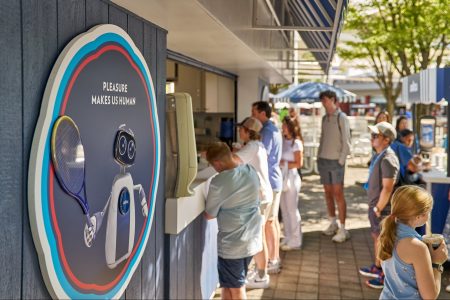In an era of rapid technological advancements and an evolving workforce landscape, companies now encounter both previously unimaginable possibilities and difficulties. One of the pivotal challenges plaguing this digital landscape is ensuring a harmonious and satisfying experience for employees, regardless of their location or the devices they use. This is where a well-crafted and comprehensive digital employee experience (DEX) strategy comes into play.
Related: Unhappy Customers and Employees Can Wreak Havoc on Your Business. Here’s How to Make Both Happy.
Understanding the essence of the digital employee experience
Gone are the days when work was confined to physical office space and a standard 9-to-5 routine. Today, employees collaborate across time zones, harnessing a surfeit of devices and applications to accomplish tasks. Before we delve into the intricacies of crafting an effective strategy, we must grasp the essence of the digital employee experience.
The idea of a people-centric workspace has existed for some time. However, many business leaders and organizations still need clarification on what DEX entails. In simple terms, DEX is the accumulation of every interaction a workforce has with their company’s technologies and processes. However, since every interaction impacts DEX, how can organizations enhance it?
Related: 78% of Employers Are Using Remote Work Tools to Spy on You. Here’s a More Effective (and Ethical) Approach to Tracking Employee Productivity.
Crafting a harmonious digital employee experience is a dance of technology, creativity and genuine care. Employees more or less want three things in terms of their digital technologies. They want technology that is simple to use, dependable and effective. However, the tricky part is balancing what employees want while maintaining a resilient security posture. Here are five steps for a harmonious digital experience strategy.
Step 1: Holistic alignment with business objectives
Creating a harmonious digital employee experience begins with aligning your strategy with overarching business goals. Every digital initiative, whether it’s the adoption of collaboration tools or the implementation of unified endpoint management systems, should be aligned with the company’s larger purpose. This alignment ensures that the digital employee experience is seamless and contributes directly to the organization’s success.
It’s critical to include important stakeholders from multiple divisions to accomplish this alignment. HR, IT, and upper management should collaborate to identify the most critical digital touchpoints for employees. By weaving the digital employee experience into the organization’s fabric, you create a sense of purpose that resonates with every employee.
Step 2: Providing a seamless onboarding experience
An employee’s experience starts from the moment they are onboarded into the company. This marks the foundation for a positive employee experience is laid. Leveraging cutting-edge solutions like Unified Endpoint Management (UEM) and Desktop as a Service (DAAS) can significantly enhance these critical phases.
UEM allows organizations to efficiently manage and secure various devices, from laptops to smartphones and tablets, from a single console. By providing a seamless and secure onboarding experience across devices, UEM facilitates a positive initial impression for new hires. Furthermore, the implementation of DAAS streamlines the deployment of virtual desktops, guaranteeing that employees enter a uniform and well-optimized workspace right from the start, regardless of their physical whereabouts. This streamlines the onboarding process and empowers remote workers to hit the ground running, eradicating any possible frustrations stemming from technical glitches.
Step 3: Nurturing the anywhere work environment through remote monitoring
The modern workforce isn’t confined to a single location, making the health and performance of endpoints a troublesome endeavor.
UEM solutions shine in this arena by offering remote monitoring capabilities that allow IT teams to watch endpoints’ health irrespective of their physical location. By proactively identifying and addressing potential issues, such as security vulnerabilities or performance bottlenecks, organizations can ensure that the remote work experience remains seamless.
A common pain point for employees and IT teams is the cumbersome process of resolving technical issues. Waiting for the IT helpdesk to intervene in the application or endpoint problems can lead to frustration and productivity losses. Remote capabilities allow IT teams to troubleshoot these issues irrespective of a device’s location. This approach boosts productivity and demonstrates a commitment to employee well-being, reinforcing a sense of support and care.
Step 4: Empowering employees through continuous training
Empowerment is a cornerstone of any successful employee experience strategy. When employees are given the skills and resources to navigate digital obstacles, they develop greater independence and self-assurance in their work.
Offering comprehensive training sessions on using digital tools, troubleshooting common problems, and staying vigilant against cyber threats can empower employees to take charge of their digital experiences. By fostering a culture of continuous learning, organizations not only enhance the skill set of their employees but also demonstrate a commitment to their growth and development.
Related: Enough About Employee ‘Engagement’! Focus on the Digital Employee ‘Experience’ Instead.
Step 5: Measuring DEX success through comprehensive evaluation
In the realm of business, what is not measured often remains elusive. The digital employee experience is no different. Organizations must set up reliable assessment and feedback processes to assess the efficacy of the tactics they have adopted.
Surveys tailored to capture employees’ sentiments provide invaluable insights into their experiences. These surveys can delve into aspects such as ease of technology usage, satisfaction with support services, and overall comfort with the digital workspace. Furthermore, leveraging tools such as End-User Experience Management (EUEM) solutions that monitor user interactions and sentiment analysis can provide qualitative feedback, real-time monitoring and a continuous benchmark system.
Crucially, these measurement strategies should be accompanied by a commitment to iterate and adapt based on feedback. Continuous improvement is at the core of a harmonious DEX strategy, as it reflects an organization’s genuine dedication to enhancing employee well-being and efficiency.
The way forward
A harmonious DEX strategy extends beyond optimizing processes; its essence is nurturing feelings of affiliation, empowerment, and employee welfare. In an age where the virtual realm assumes an increasingly significant function in our professional lives, enterprises that give precedence to enhancing the digital employee encounter are better poised to attract, retain, and nurture a workforce that excels within this evolving digital landscape.
Read the full article here










